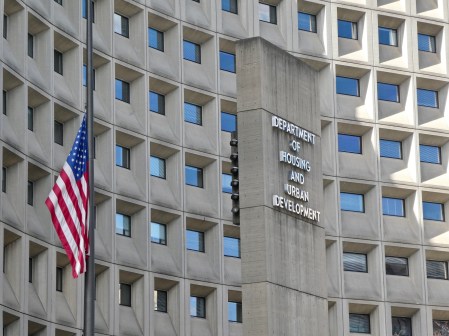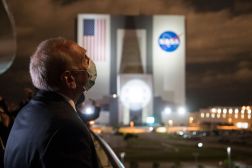NASA invests in AI astronauts and autonomous lunar landers

When NASA goes back to the moon, it might be bringing some autonomous tech along, too.
The space agency announced its picks for its Phase II Small Business Innovation Research (SBIR) program grants this week. Among the projects funded are several that utilize artificial intelligence and autonomous technology, including a user-friendly, natural language speaking “Astronaut Agent” to help astronauts monitor the spacecraft and detect any issues; a LIDAR sensor for space-based autonomous landing; and a prototype of a tool for explaining the decisions made by NASA AI systems.
Overall, the agency will spend $106 million on 142 projects being undertaken by 129 small business from across the country.
“Small businesses play an important role in our science and exploration endeavors,” Jim Reuter, acting associate administrator of NASA’s Space Technology Mission Directorate, said in a statement. “NASA’s diverse community of partners, including small businesses across the country, helps us achieve our mission and cultivate the U.S. economy. Their innovations will help America land the first woman and the next man on the Moon in 2024, establish a sustainable presence on the lunar surface a few years later, and pursue exciting opportunities for going to Mars and beyond.”
SBIR, at NASA and beyond, is a three-stage process. Companies must successfully complete Phase I in order to win awards in Phase II. Phase II contracts, which last for two years and carry a maximum funding amount of $750,000, are focused on “development, demonstration, and delivery” of the proposed innovation. Phase III, should companies continue on, is all about commercialization.
To that end, NASA SBIR solicitations must identify potential non-NASA applications for their proposed technologies as well. The “Astronaut Agent” team foresees a future in which their technology is used in commercial spacecraft as well as government ones; the team building a LIDAR sensor for lunar landing says the Army’s autonomous ground vehicles could also benefit from this innovation.
The solicitation period for 2019’s Phase I grants closed at the end of March — NASA plans to announce its selections in June.
SBIR isn’t the only way NASA funds research by small businesses. The space agency also runs the Innovative Advanced Concepts (NIAC) program — this year’s 18 grant recipients of this initiative were announced in April.






